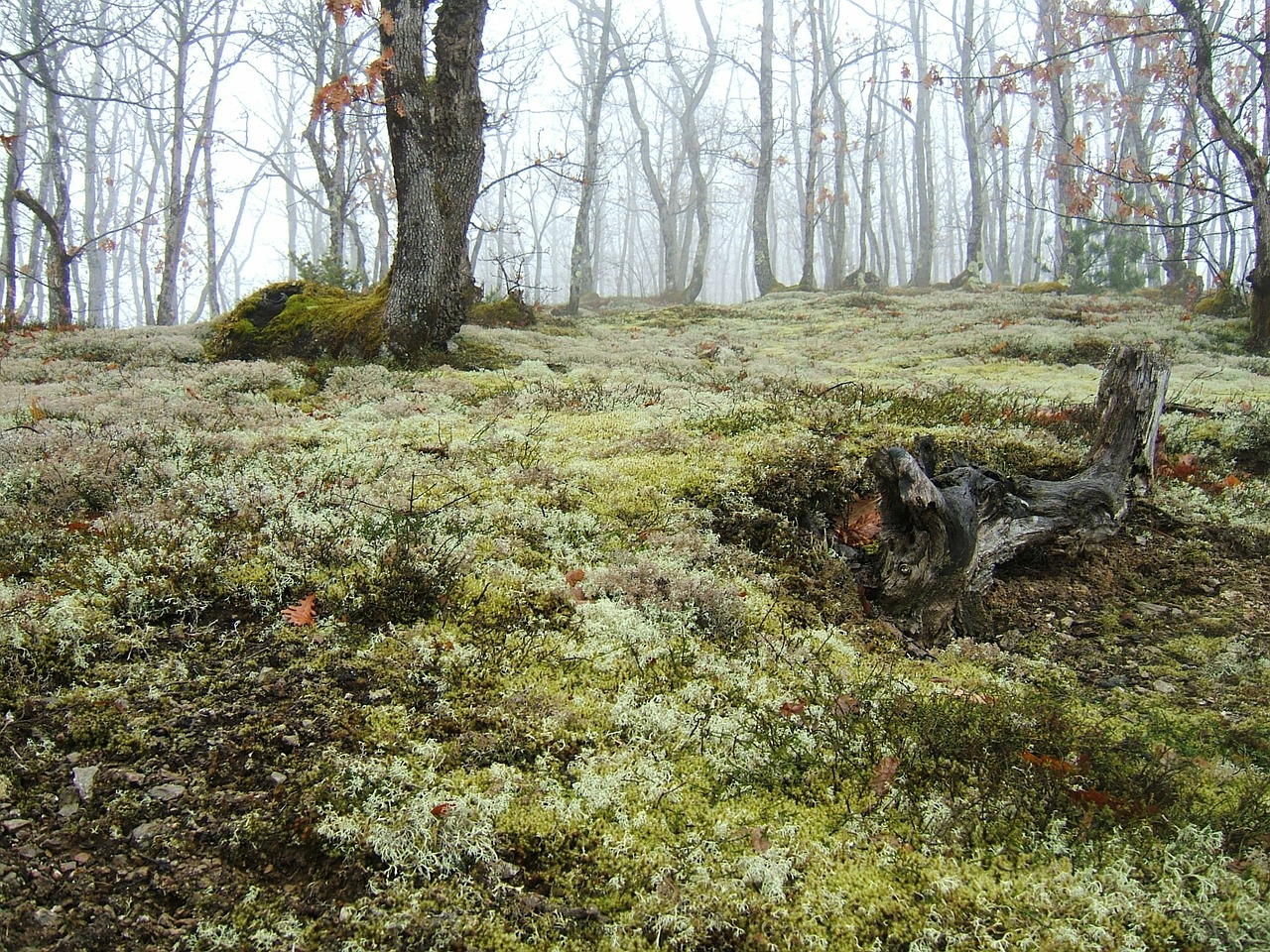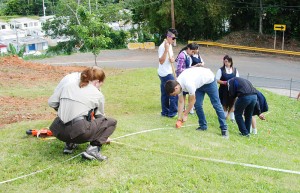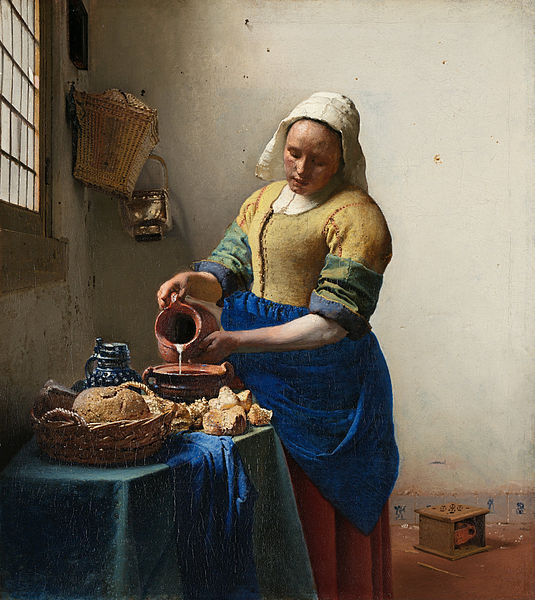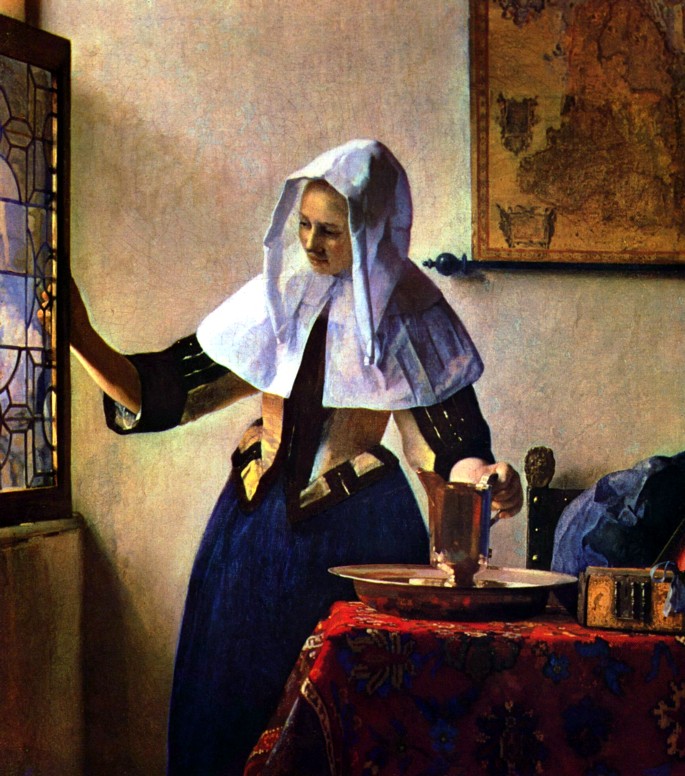Some people consider meditation to be nothing more than an insular form of escapism, whereby the meditator retreats to a quiet place, free from the distractions of the modern world and immerses themselves in a state of tranquil bliss. I think that this is a misunderstanding, albeit an understandable one . When most people do engage in formal meditation practice they usually seek out the type of place described above and to anyone observing, said meditator is doing anything but engaging with the world around them. Although it is quite possible to experience a state of tranquil bliss while meditating and it can be beneficial to practice in a quiet place, these things do not form the purpose of meditation – rather the purpose as I see it is to learn how to engage the world with greater clarity and understanding. Consequently, it is at some point necessary to employ the techniques of meditation outside of the formal setting.
In part 1 of this series I provided a brief description of the Mahasi Vipassana (or Noting) meditation technique and discussed how I use this method as part of my own formal practice. In part 2 I will try to describe how the noting technique can easily be practised in many situations and can help us to experience many of the things that we take for granted more fully and in a more satisfying way.
Many of the benefits of meditation are likely to be subtle, incremental and sub-concious. It is unrealistic to expect that one will be able to actively employ mindfulness in every situation, this should happen gradually overtime. It is also doubly unlikely that one will be able to actively ‘note’ in many everyday situations – imagine trying this when being in conversation – it wouldn’t work. Nevertheless, there are many situations where we can ‘note’ effectively, thereby extending the practice outside of the quiet retreat and into the ‘real’ world. I will give three examples of activities that might lend themselves well to the practice of noting; walking, eating and cleaning the toilet.
Walking
As far as I can tell most Buddhist teachers incorporate walking meditation into their teachings. This seems to be an attempt to break down the barrier between meditation practice and life as we know it, adding – as it does – the movement of the body and the movement through space, and as such it seems like a good place to start with the noting technique. Meditative walking, like noting itself, is an artificial and deliberate facsimile of something that we normally do without thinking, only in this context the idea is to perform the task (walking) with a much greater degree of concentration and focus. If you have found noting to be useful in ‘sitting’ meditation then it is likely that you will find it equally useful in walking meditation.
Begin from a standing position and perhaps do whatever you do before any meditation session – deep breathing, body scan, etc. Before you begin to take your first step note the intention to step; ‘intending… intending’. Then being to lift one of your legs and as you do so note ‘lifting… lifting’. Keeping it simple, slowly bring the foot forward and as you lower it note ‘placing… placing’ or ‘putting… putting’, then it is back to lifting and the cycle starts again. As with all noting, the intention is to aid us with our concentration – the focus is really on the sensation and experience of walking, not on the formation of words.
As you become used to this simple noting it is possible to add a greater degree of detail, so ‘intending… lifting… placing… lifting… placing…’ might become ‘intending… lifting… pushing (as you push your leg forward)… placing… lifting… pushing… placing’. Because we are focusing on a specific activity in this meditation there is more focus than with the sitting. If anything else grabs the attention then note it, before intentionally returning the focus to the walking. In my experience this type of walking meditation is very slow and deliberate and requires a fair degree of concentration, so the mind is less likely to wander anyway.
Noting can also be used when walking normally, although it is not realistic to note every movement of the leg, as described above. Instead, you can do something more akin to the sitting meditation. As you walk just note ‘walking… walking… walking…’ and experience the whole bodily sensation of walking. Like the noting of the breath described in part 1, walking can be the base from which your attention can roam. If something grabs your attention then note it for as long as it is the main focus. If it is the sound of a bird singing, note ‘listening… listening…’ or ‘sound… sound…’ and if an emotion arises from the listening then note it too – ‘happy… happy…’ or ‘irritation… irritation’. If there is no particular focus then return your attention the the sensation of walking.
It should hopefully be fairly clear how this technique can be applied to all sorts of activities and so, with the assumption that the noting technique is now understood, I will only skim over the next two examples.
Eating
One thing that I have gained from meditation (specifically this method and the Soto Zen technique of Zazen) is an understanding that each moment consists of a magnificent symphony of sensation, emotion and thought – a symphony that I was almost completely unaware of, despite the fact that it is present at all times. There have been several occasions when this realization has been strongly reinforced and one of those was when I was on retreat learning Mahasi Vipassana, and applying it to the act of eating.
On the first day all I seemed to note was ‘intending… chewing… swallowing’. This was fine, but as the retreat went on the noting words that I was able to use increased to such an extent that I felt quite overwhelmed and surprised at just how complex the experience of eating was. There was the lifting of the spoon, the temperature of the food, the sounds (spoon hitting teeth or squelch of saliva), the texture of the food, the emotions and thoughts that arose as a direct consequence of eating – the list seemed endless. However, the thing that surprised me the most was that ‘taste’ was the very last thing that I noted. Now, one might assume that the food must have been tasteless and I have to admit that, being the first time that I had lived on a purely vegan diet, I was previously concerned that it would be. This was not the case – the food tasted wonderful and yet the sensation that is usually the only one that holds my attention when eating took a back seat, there was so much other stuff going on of which I am usually completely unaware.
As with walking this can be done as a formal type of meditation – with each bite being taken slowly and deliberately, but it can also be applied to ‘normal’ eating – although the detail of the noting will naturally be less.
Cleaning the Toilet
The example of cleaning a toilet as a mindful activity has been used by other before and there are good reasons for this – it is unpleasant, it is something that most of us would rather avoid and when we do it we often do anything rather than fully focus on the job at  hand. My understanding of the application of mindfulness is that it should not be reserved only for those activities that we enjoy – it is equally important to apply it to the less pleasant experiences of life.
hand. My understanding of the application of mindfulness is that it should not be reserved only for those activities that we enjoy – it is equally important to apply it to the less pleasant experiences of life.
When I clean the toilet I distract myself, I might plan the rest of the day or mull over a conversation from yesterday – the act of cleaning is done automatically and I do not give it my full attention. It is reasonable to ask why we should need to give this task our full attention – what is wrong with distracting ourselves anyway? The answer to this requires a much fuller explanation of the benefits of mindfulness and I will not cover them here, indeed I do not feel qualified to cover them fully anywhere, but if you are asking yourself why bother then I urge you to seek more expert advise and make your own mind up from there.
If you do subscribe to the benefits of mindfulness then using the noting technique while cleaning the toilet, or doing any other unpleasant activity is a good way to practice. Start by noting the intention to clean or even the intention to move your arm and go from there. It might only be the physical acts associated with the cleaning that hold your attention, and that is fine. Don’t, however, restrain four focus – if there is a particularly nasty something that grabs your attention then don’t avoid it, but also don’t feed it with detailed thought. You might just note a thought; ‘that is disgusting’, and so note something like ‘thinking’, then you may notice an emotion that this thought has lead to – this might be something like ‘disgust’ or ‘revulsion.’ From this the attention will probably move to the intention to clean said something, then on to the physical activity of cleaning it and then, maybe, a feeling of satisfaction may arise. As with the formal meditation the idea is only to use the noting words to aid our focus, not to intellectualize – so it is best not to note anything like ‘moving my hand’ or ‘I am repulsed’ rather ‘moving’ or ‘revulsion’.
After a while I hope that you too will discover that like eating, cleaning the toilet can be a magnificent and captivating symphony of sensation, thought and emotion.
You may not be convinced by any of what I have suggested and if you are already proficient and well practised at other forms of mediation or mindfulness training then Noting Meditation may be of little use, but I urge you to give it a good go before passing judgement, and if you are really interested in continuing this practice then please seek out more expert advice. This technique will not be for everybody, but if you are just starting out with meditation and are finding your attention difficult to hold, then you may find it as beneficial as I have and you might find yourself noting as you wash up, drive to work, open a door, get up out of your chair and any other activity that you find yourself taking part in.
image taken from www.stain-removal-101.com





